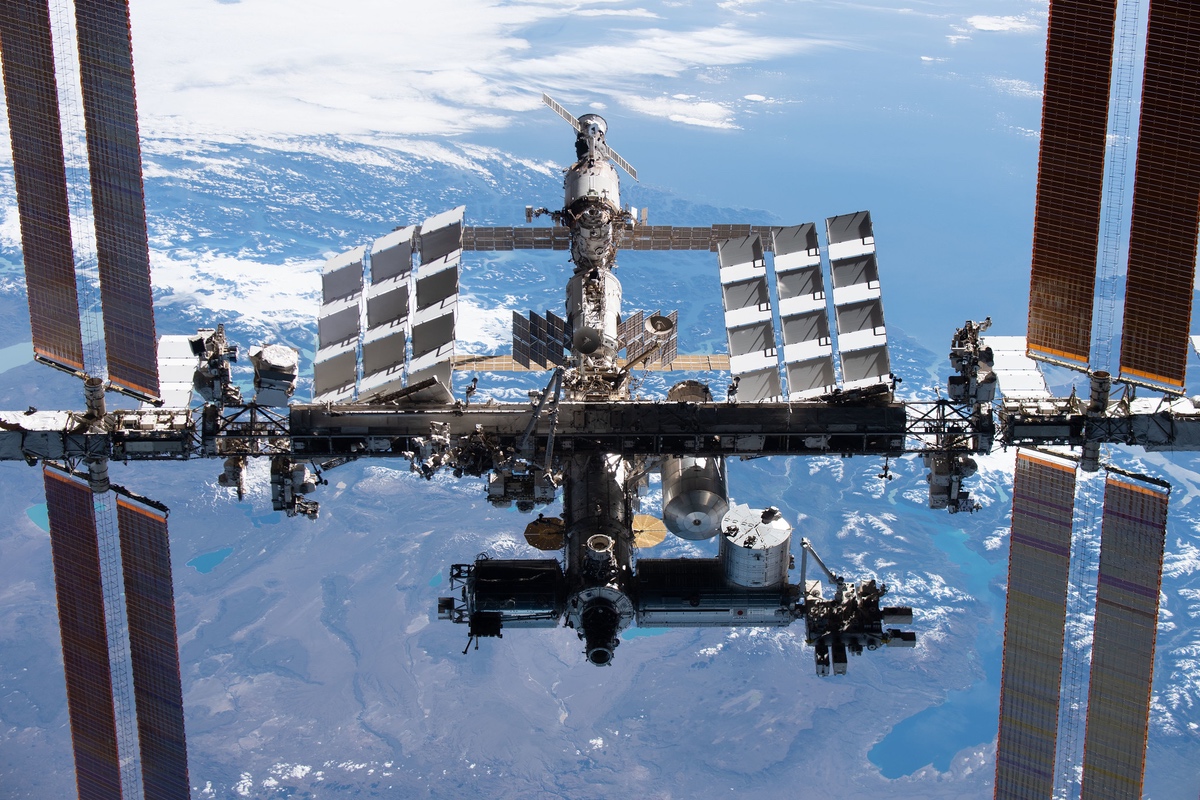Products You May Like
WASHINGTON — NASA’s plan to spend up to $1 billion on a tug to deorbit the International Space Station is a missed opportunity to instead repurpose or recycle the station, some in industry argue.
NASA announced plans as part of its fiscal year 2024 budget proposal this month to develop the tug to help deorbit the station at the end of its life in 2030. NASA is seeking $180 million in 2024 to start work on the tug, and anticipates spending as much as $1 billion to build it.
The agency had made clear that it and the other partners would deorbit the station at the end of its life, ensuring that debris that survives reentry falls in an uninhabited region of the South Pacific Ocean to avoid the risk of damage or casualties. NASA previously expected that it would use multiple Progress cargo spacecraft to handle the deorbiting, but said at a March 13 event about the budget proposal it chose to develop the tug to provide redundancy in those plans.
For some in industry, though, spending as much as $1 billion to bring down the station sends the wrong message and is also a missed opportunity to instead repurpose elements of the station, recycling material that could be used for other commercial applications.
“As technology matures, certainly in the next decade we’re going to get to the point where we’re going to be able to reuse and recycle a lot of these materials,” said Ron Lopez, president and managing director of Astroscale U.S., a company working on satellite servicing and debris removal technologies. “Instead of letting it burn up and lose all of that economic value, you take it to a foundry in space” and break it down into raw materials, he said during a Satellite 2023 panel March 16.
That sounds like science fiction, he acknowledged, but he noted Astroscale recently won a Small Business Innovative Research award from the U.S. Space Force, in partnership with CisLunar Industries, to test technologies for repurposing debris into materials like propellant.
“The right thing to do is to bring it down,” said another panelist, Robert Hauge, president of satellite servicing company SpaceLogistics. However, he saw benefits of finding ways to repurpose at least parts of the ISS.
He suggested that NASA and other partners make awards to multiple companies to test ways to recycle ISS components. “It would send a demand signal to industry that the entire world sees that this is important,” he said, “but it would also fund industry and bring more into this business, which now gives the government and commercial industry options.”
That international partnership will make any such agreement a challenge, said John Klein, a professor at George Washington University’s Space Policy Institute. “There’s a lot of sunk cost in there. It would be a shame not to use what we can.”
NASA has not discussed any consideration of repurposing elements of the ISS before the station is deorbited. However, during a panel discussion last October at an event by the Beyond Earth Institute, Kathy Lueders, NASA associate administrator for space operations, ruled out an idea of boosting the ISS into a higher orbit to preserve it for future use or simply as a heritage site.
“When we did the calculations, it took 30 or 40 Progresses” to boost the ISS into a higher orbit, she said. “To us, it’s really about making sure that you can’t have it in a position where it’s going to cause a hazard.”
“I wish we could keep station up there forever, but unfortunately we’re fighting the laws of physics here,” she said. “It will be a very sad day.”
Costs and benefits of debris removal
The Satellite 2023 panel also addressed a recent NASA report that performed a cost-benefit analysis of orbital debris removal. That study found that that costs borne by operators to deal with debris, such as analyzing potential collisions and performing maneuvers, was relatively modest and dominated by government rather than commercial operators.
“We spend a lot of money to make sure we’re safe,” countered John Guiney, senior vice president of satellite and network operations at OneWeb. That includes, he said, extensive coordination with SpaceX and its Starlink satellite constellation. “I know they put a lot of time and money into their autonomous systems” for collision avoidance.
He noted earlier in the panel that OneWeb gets an average of 53,000 conjunction data messages a day from the Space Force about potential close approaches. That results in six to eight maneuvers day by the constellation. “We spend a lot of time and money to ensure that we don’t have a collision.”
That report found the systems that provided the shortest return on investment were ground- and space-based lasers to deorbit small debris between 1 and 10 centimeters across, as well as technologies to nudge larger debris to avoid collisions.
“The challenge with a lot of small pieces of debris is that not only is that technology not quite there, but there are no commercial companies that I know of that are investing in the development of that technology,” argued Lopez. By comparison, several companies are working on technologies to deal with larger debris.
Klein said the report did a good job attempting to estimate costs associated with debris. “What’s the solution going to look like for a complex problem? It’s probably going to be a complex solution,” he said. “It’s probably going to be a range of different options to take care of it.”
